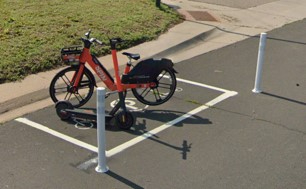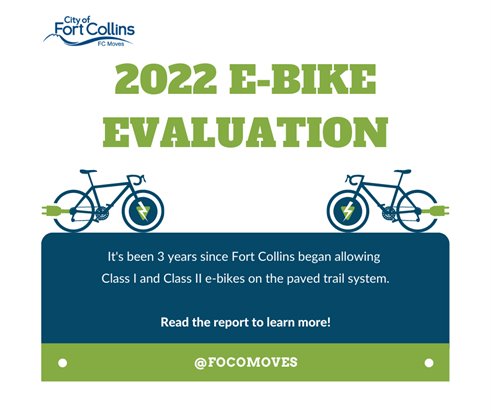E-Bikes, E-Scooters, and Micromobility#
What is micromobility?#
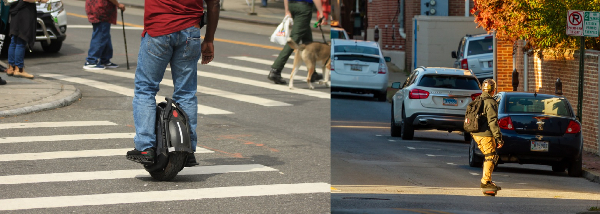
Bikes, e-bikes, e-scooters, one-wheels, and longboards and examples of micromobility
Micromobility means light-weight vehicles. There are many kinds: bicycles, scooters, skateboards, longboards, one-wheels, hover boards, skates, and more. They can be human-powered or have a motor which usually has a top speed of 20 mph or less.
The legal classifications of micromobility are bicycles, e-bikes, e-scooters, and toy vehicles. Although they are classified as toy vehicles, they aren't just toys. Many people rely on them for transportation.
Shared micromobility is self-service rental programs, such as Spin e-bikes and e-scooters.
What are e-bike and e-scooter rules?#
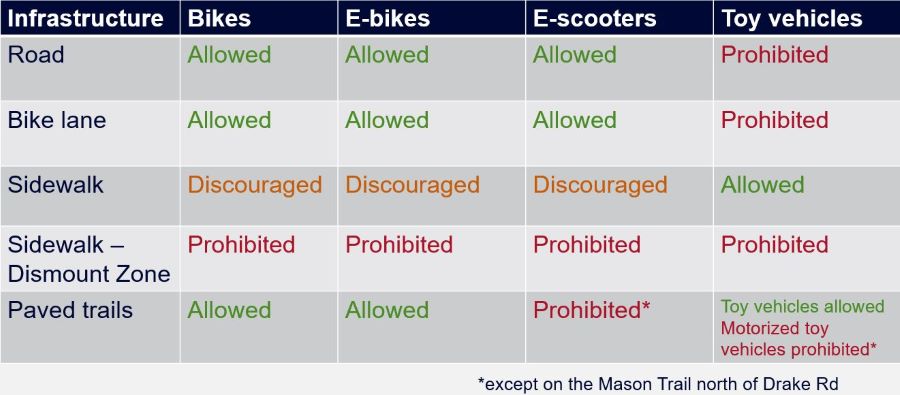
There are different rules for each kind of micromobility.
Batteries and Fires! Learn what to do#
Fires can start when batteries are stored, charged, or disposed of incorrectly. This includes the batteries many of us regularly charge in our homes and those that power e-bikes and e-scooters. You can protect yourself and your home - and continue to enjoy your e-bikes and e-scooters - with a few simple precautions.
1. Be careful about deals that are too good to be true. Shoddy batteries or batteries with fake certifications are a fire hazard.
2. Only charge the battery with its designated charger. Using chargers or cables that aren't designed for the battery can damage your battery.
3. Don't overcharge the battery. If you aren't sure whether your charger cuts off automatically when the battery is fully charged, unplug the battery after charging, or consider using a timer on the outlet to shut off charging after a few hours.
4. Store the battery in a cool, dry place.
5. If you are storing the battery for a long time, check on it regularly. If you see discoloration or notice a smell, dispose of it. For proper battery disposal, visit Recycling.
Choose Your Ride, Shift Your Ride#
Through Choose Your Ride, Shift Your Ride, people with low income received an e-bike or a Spin pass.
On-Street Bike & Scooter Parking Program#
The City is employing several countermeasures to reduce conflicts between pedestrians and improperly parked bicycles and scooters, and to reduce barriers for people with disabilities. The countermeasures include:
- Rider penalties for improper parking, ranging from a warning to a permanent ban.
- A quiz that teaches proper parking, with a ride credit for passing the quiz with 100% correct answers.
- Bike/scooter boxes, or designated parking areas, with a ride credit for riders who end their ride in a box.
View the completed and upcoming locations of bike/scooter parking boxes on this interactive map.
The bike/scooter boxes are marked by white paint and two white pylons. Most boxes are located in street sections where motor vehicles are not allowed to park (such as within 30 feet of a stop sign or 20 feet of an intersection) and thus do not take away on-street parking from cars.
The locations are identified through a hot spot analysis of Spin trip ends and requests. Locations with an equity focus and locations that serve designated bikeways are prioritized.
This program is in response to complaints about improperly parked scooters and bicycles and feedback from Spin riders who said they needed better parking options. For more information, please contact Rachel Ruhlen at (970) 416-2040 or rruhlen@fcgov.com.
Interested in getting a parking box near you?#
Contact Rachel at rruhlen@fcgov.com or (970) 416-2040:
- If you are a property owner or property manager and would like to have a bike/scooter parking box on your property
- If you wish to request a bike/scooter box in a specific location, such as near your home or near a destination you visit.
2022 E-Bike Evaluation#
As electric-assist bicycles (e-bikes) are gaining more popularity we wanted to assess perceptions and impacts of allowing e-bikes and other e-devices on paved trails in Fort Collins. We collected information on trail utilization and experience, use of e-bikes, safety behaviors, speeds, and user perceptions.
What are E-bikes?#
| Under Colorado and Fort Collins law, e-bikes are defined as bicycles with two or three wheels, fully operable pedals, and an electric motor. | ||
|---|---|---|
| Class 1 E-bike | Class 2 E-bike | Class 3 E-bike |
|
Provides electrical assistance only while the rider is pedaling, up to 20 mph. Allowed on paved trails. Not permitted on soft-surface trails. |
Provides electrical assistance regardless if the rider is pedaling or not, up to 20 mph. Allowed on paved trails. Not permitted on soft-surface trails. |
Provides electrical assistance while the rider is pedaling, up to 28 mph. Must be equipped with a speedometer, and may not be ridden by people under 16 (unless as a passenger). People under 18 must wear a helmet. Not allowed on paved or soft-surface trails. Allowed on streets and in bike lanes. |
E-Bikes Allowed on Trails#
On April 21, 2020 the Fort Collins City Council approved City and Traffic Code updates to allow Class 1 and Class 2 e-bikes on paved trails following the completion of the 2019-2020 pilot program.
In 2021, Spin began an e-bike and e-scooter share program in Fort Collins. Spin e-bikes are geo-fenced to a maximum of 15 mph on paved trails and will not operate on soft/natural surface trails. Spin e-scooters are geo-fenced and will not operate on any paved trails.
Thank you for your feedback!
During the one-year 2019-2020 pilot program, City staff and volunteers collected data and feedback from the community to assess perceptions and impacts associated with allowing e-bikes on paved trails. A report summarizing the information collected and recommendations is available below.
E-bike Literature Review#
During the pilot program, the City of Fort Collins joined Boulder County, Larimer County, and the City of Boulder as a funding partner in the completion of a Literature Review to provide a snapshot of relevant research related to e-bikes and how they are being addressed in other jurisdictions. The literature review also assessed broader topics related to recreation conflict and emerging technology. The key findings from the literature review were:
Literature Review Key Findings:
- E-bikes provide increased access to recreation and transportation; older adults are more likely to use e-bikes for recreation and fitness whereas younger adults are more likely to use e-bikes for commuting, utilitarian trips, and to replace car trips.
- The addition of the electric-assist encourages people to take more and longer trips by bike, and offers individual health benefits.
- E-bike users indicate feeling safer on an e-bike than a conventional bike given the ability to travel through an intersection quickly or traverse challenging terrain.
- Safety, speed, crowding, and user conflict are common concerns related to bicycles, and even more so for e-bikes. However, e-bike research has shown that people tend to view e-bikes more favorably once they are exposed to or become familiar with e-bikes.
- The literature review found little research to suggest that e-bikes have greater negative impacts on trails or wildlife than regular bikes.
- Many Colorado jurisdictions have acted to allow some or all classes of e-bikes on their trails.
E-bike Pilot Program Overview (April 2019 - April 2020)#
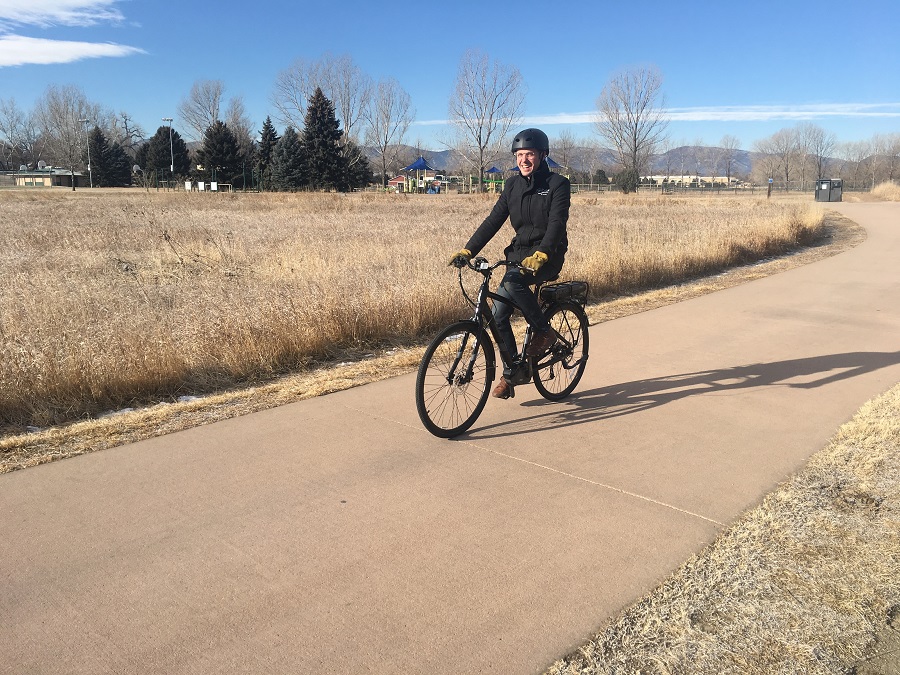
On April 19 the Fort Collins City Council approved a one-year electric assist bicycle pilot program allowing e-bikes on paved trails from May 1, 2019 through April 30, 2020.
The change was prompted by a new state law allowing e-bikes on trails unless otherwise restricted by a local jurisdiction, and the growing popularity of e-bikes. The City’s Bicycle Advisory Committee, Transportation Board and six other City Boards passed recommendations in support of a pilot program to allow and evaluate e-bikes on paved trails.
The pilot program included:
- One-year trial period beginning May 1, 2019
- Class 1 and Class 2 e-bikes only (electric assist provided up to 20 mph)
- All paved trails (no unpaved trails)
- Extensive education and evaluation

